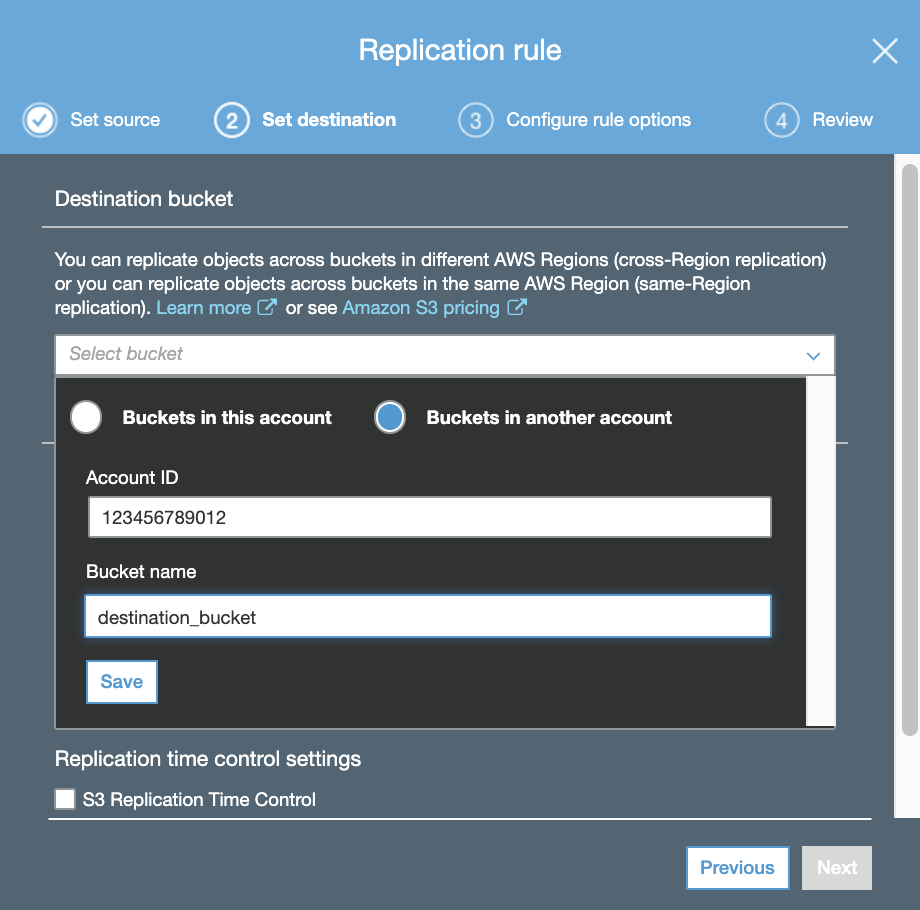Secure File Replication and Backup: S3 Cross-Region and Account Solution
Question
The business application keeps writing files to an S3 bucket in an AWS production account.
To meet the compliance requirements, the files in the S3 bucket should be replicated in another AWS region and another AWS account. So even if there is an outage for a region or the AWS account is deleted, the files still have a backup and can be restored if required. Which solution is the most appropriate one to achieve these requirements?
Answers
Explanations
Click on the arrows to vote for the correct answer
A. B. C. D.Answer: A.
Option A is CORRECT because the AWS S3 Replication feature enables automatic, asynchronous copying of objects across S3 buckets in the same or different AWS accounts.
Option B is incorrect because it is not suitable to run the Lambda function every 24 hours.
With S3 Replication, objects can be replicated within 15 minutes.
This would not be the most efficient and cost-effective solution.
Option C is incorrect because you need to maintain a Lambda function and an SQS queue to synchronize files.
Option A provides a more straightforward and efficient solution.
Option D is incorrect because AWS Backup does not support S3 replications.
Reference:
https://docs.aws.amazon.com/AmazonS3/latest/dev/replication.html#crr-scenario
To meet the compliance requirements of replicating the files in an S3 bucket in another AWS region and another AWS account, the most appropriate solution is A: Configure a cross-region replication for the S3 bucket. The destination bucket belongs to a different AWS account. Both the source and destination buckets should enable versioning.
Explanation:
A cross-region replication for the S3 bucket ensures that the files are replicated to another region and another AWS account, providing a backup in case of an outage in a region or if the AWS account is deleted. The destination bucket should belong to a different AWS account to prevent data loss if the source account is compromised. Additionally, versioning should be enabled in both the source and destination buckets to track changes and prevent accidental deletion or modification of objects.
Option B, using a CloudFormation template to create a Lambda function that copies the files from the source bucket and pastes them in another S3 bucket, is not an ideal solution for several reasons. First, copying files every 24 hours may not meet compliance requirements, especially if the business application is writing files frequently. Additionally, this solution may not provide sufficient protection against data loss in case of a region outage or AWS account deletion.
Option C involves configuring the object upload event in the source S3 bucket and sending the notifications to an SQS queue. Then, using a Lambda function to listen to the queue and synchronize files from the source bucket to the destination bucket. This solution is not ideal because it may not provide adequate replication and backup in case of a region outage or AWS account deletion.
Option D, creating a backup plan for the S3 bucket in AWS Backup, is not the best solution for replication as it is primarily focused on backup and recovery. AWS Backup enables centralized backup management and automation of backups across AWS services, including S3, but may not provide sufficient protection against data loss in case of a region outage or AWS account deletion.
In summary, option A, configuring a cross-region replication for the S3 bucket with versioning enabled in both the source and destination buckets, is the most appropriate solution to replicate the files in an S3 bucket in another AWS region and another AWS account to meet compliance requirements.
